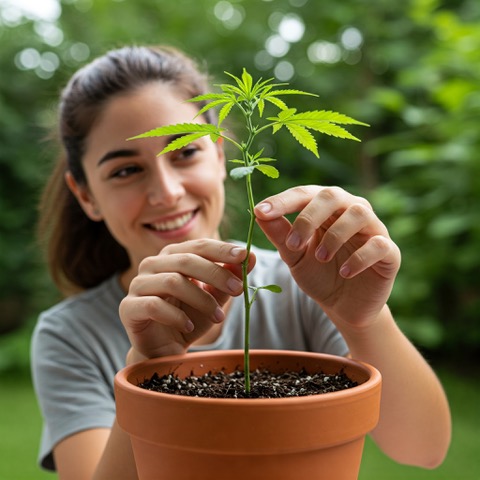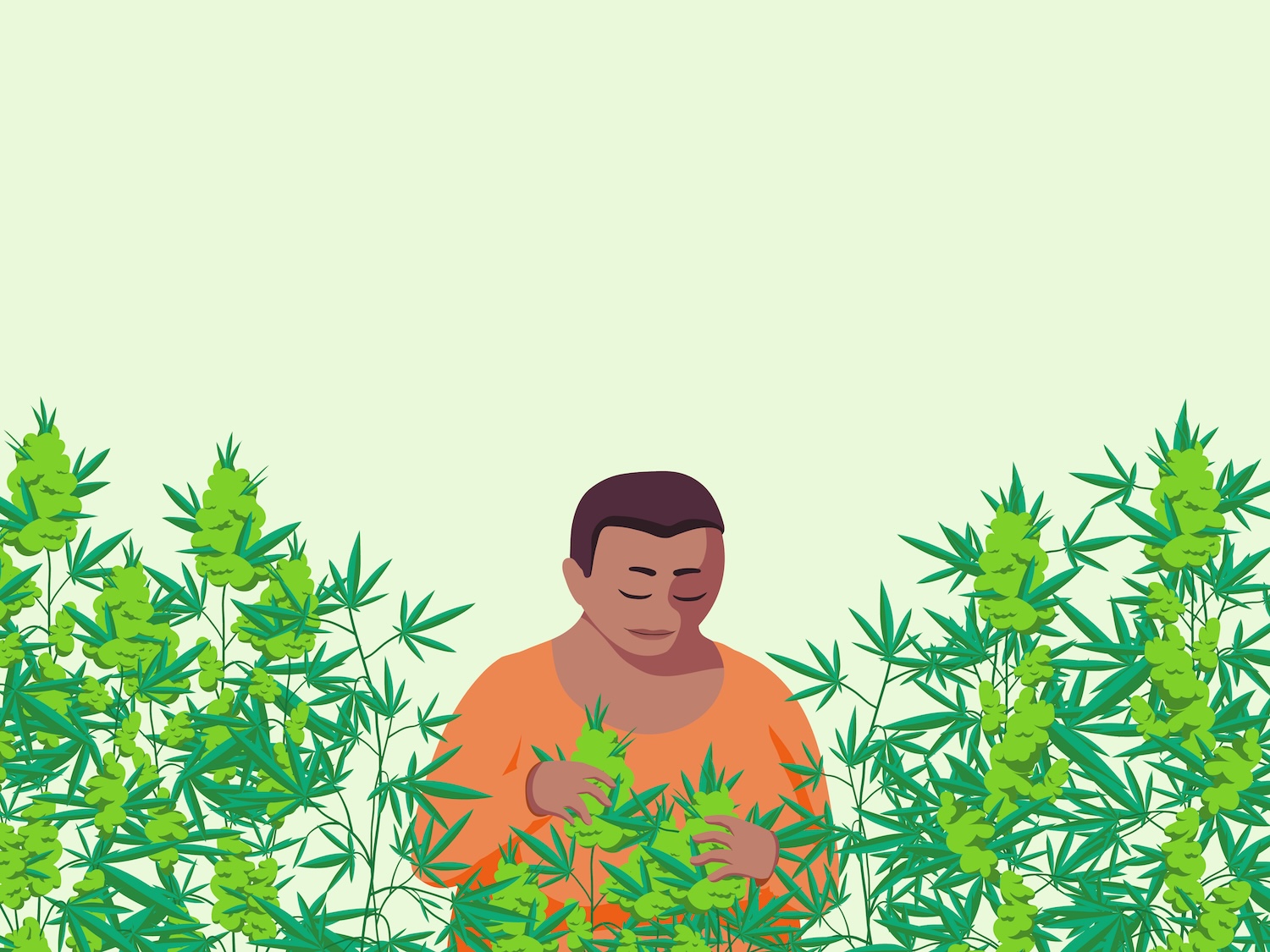HOW TO TRAIN CANNABIS PLANTS FOR BEGINNERS
Training cannabis plants is one of the most effective ways to improve yields. It allows more light to penetrate the canopy and is perfect for growers working in small spaces. If you are not familiar with cannabis plant training methods, then this article is just what you need!
We will cover the right time to train, explain topping, the FIM technique, and Low-Stress Training (LST), Sea of Green (SOG), Screen of Green (ScrOG), super cropping, defoliation, and pruning. We will also discuss the benefits of cannabis training techniques, the tools and equipment required, and common mistakes to avoid.
WHAT DOES TRAINING CANNABIS PLANTS MEAN?
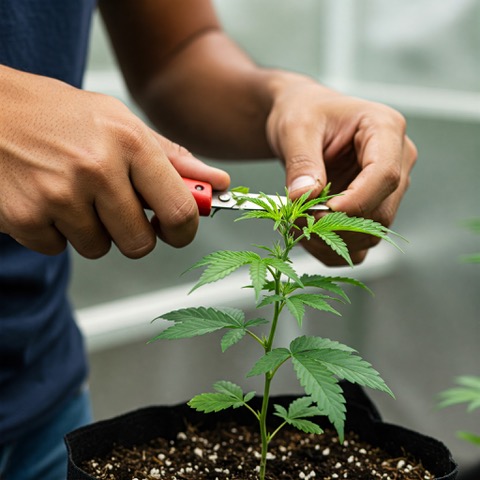
In the same way that people lift weights to become bigger and stronger, you can train cannabis plants to grow into robust and bushy plants! Low Stress Training or High Stress Training (HST) is when you are hands-on with your plants and manipulate the shape and structure to achieve a desired outcome. Plant training techniques can be applied, either individually or in combination. Below is a list of the benefits associated with cannabis plant training.
THE BENEFITS OF TRAINING CANNABIS PLANTS
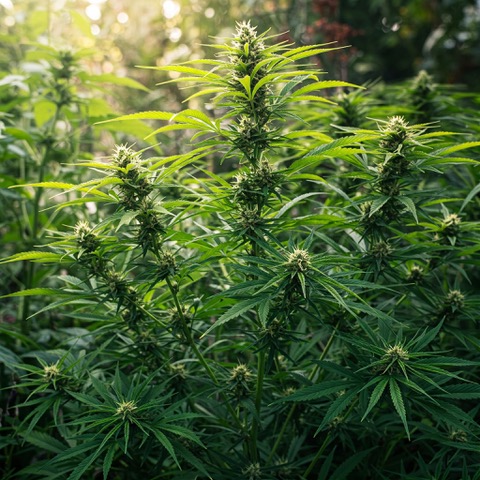
- Training cannabis plants changes their shape and structure.
- A grower may use High Stress Training (HST) techniques.
- Yields can increase significantly with proper plant training.
- Plant training can reduce the stretching phase when flowering.
- Pruning improves airflow around the plants.
- The plants can focus their energy on the top canopy.
- Lower, undeveloped buds are no longer an issue.
- Training makes the branches stronger and more durable.
- Sativa cannabis plants are easier to control indoors.
- Plant training improves light penetration.
- Training is optimal for growers with a small grow space.
WHAT ARE THE CANNABIS PLANT TRAINING OPTIONS?
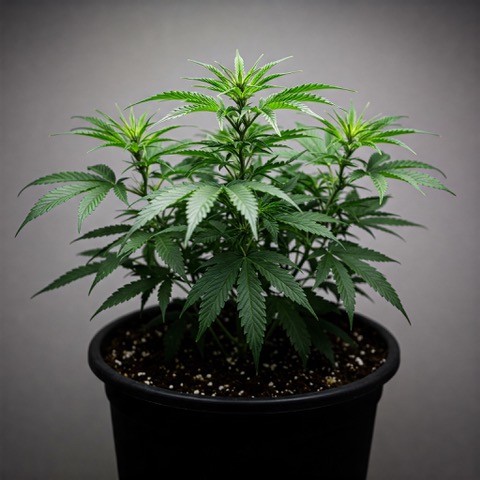
There are various cannabis plant growing techniques and as a grower, you decide which plant training techniques are best suited. Each method will achieve a different outcome. Below is a list of other training techniques, explaining what each one does, so you can better decide which is most practical.
WHAT IS THE FIM TECHNIQUE
The FIM technique is close to topping; instead of entirely removing the shoot, you will cut away 75% of the leaf and leave a small part of the growth behind. After applying the FIM technique, the other growth sites beneath the cut will use up the plant’s energy and grow larger. After 5-7 days of recovery, the crown shoot returns to normal. Make sure to cut cleanly and horizontally, and do not remove more than 75% of the top growth when applying the FIM technique.
WHAT IS TOPPING OF CANNABIS PLANTS?
Topping, or pinching, is a High Stress Training (HST) technique that removes the crown growth shoot, causing the two small axillary shoots beneath to grow. As a result of topping, the two shoots take over and produce two crown growing sites. When training cannabis, topping can be done for long periods, resulting in a very bushy plant with a large number of main colas once flowered.
IS LOW-STRESS-TRAINING (LST) GOOD FOR CANNABIS PLANTS?
Low-stress training (LST) involves tying down a growth shoot. You can tie down the top main central shoot or the side branches. Low-stress training is excellent for keeping the plant height short and producing a wide and bushy growth structure. When performing LST, ensure that the wire used is not too loose or tight when tying, and check how flexible the branches can bend to avoid snapping them with too much pressure.
HOW TO USE SUPER CROPPING FOR CANNABIS ?
Super cropping plant training technique is classed as High Stress Training (HST), and it involves breaking the stem. The goal with super cropping is to apply enough pressure using your fingers and, by twisting and pressing, purposely break the inner cell walls. With Super cropping, recovery time takes around 7 days, and the broken stem grows back with a thick wooden knuckle. Super cropping is one of the most impactful plant training techniques and can dramatically increase yields and vigour.
WHAT IS DEFOLIATION OF PLANTS?
Defoliation involves pruning all lower growth beneath the top 2 internodes a week before flowering, removing all leaves and softwood shoots, and creating a lollipop shape. It is an excellent time to take cannabis clones. After defoliation, the plant will focus all of its energy on a top-heavy canopy, improving airflow and eliminating the concern of small, undeveloped buds developing during the flowering period.
THE SCREEN OF GREEN CANNABIS PLANT TRAINING METHOD (SCG)
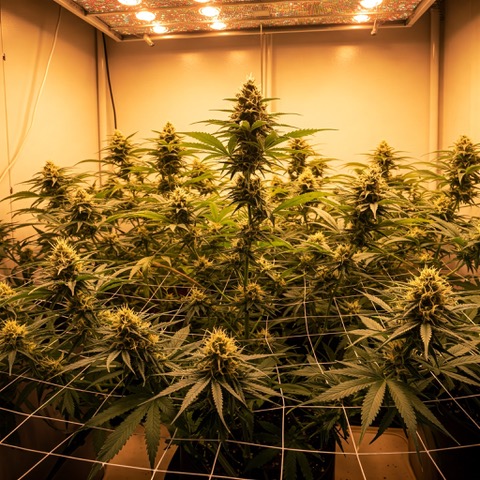
There is a simple and highly effective method for training cannabis plants using a net screen, known as ScrOG (Screen of Green). This technique involves placing a screen of metal chicken wire, plastic netting, or a bamboo trellis above the growing plants.
As the plants grow, their shoots are threaded through different screen sections with the ScrOG (Screen of Green) method. The objective is to create a bushy canopy that is evenly spread out, allowing maximum light penetration and keeping the canopy as uniform as possible. The ScrOG (Screen of Green) method typically requires 6 to 10 weeks of vegetative time and is ideal for growers with 1 to 2 plants, especially in small indoor spaces.
- This technique is excellent for cultivating large plants in a limited growing area.
- Growers must employ techniques such as topping, super cropping, and L.S.T.
- The ScrOG (Screen of Green net used can be customised to fit any size space.
- When ScrOG (Screen of Green is executed correctly, yields are significantly increased.
- Sativa-dominant hybrids are best suited for ScrOG (Screen of Green)
GROWING PLANTS WITH SEA OF GREEN (SOG)
The SOG (Sea of Green) method involves using small plants grown in 7.5-litre pots. The goal is to use a high volume of plants, for example, 9 or 16 in a 1 x 1 meter square grow tent. Cannabis plants inside a SOG (Sea of Green) set-up are vegetated for 2-3 weeks, then flowered, producing a uniform and medium-sized canopy around 75 – 100 cm tall.
WHEN TO TRAIN CANNABIS PLANTS?
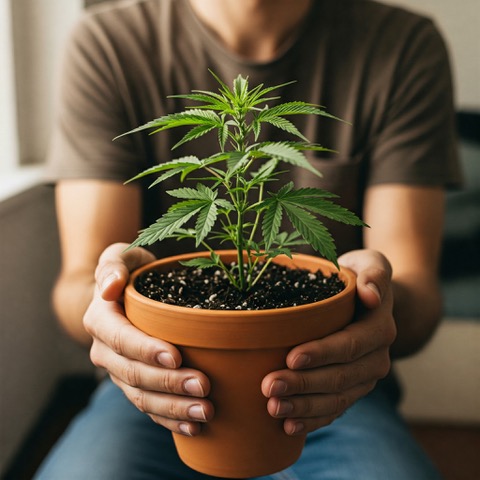
Training cannabis plants should be done within a specific time frame to achieve the best results and to prevent causing stress too early or too late. Cannabis plants transition from the germination stage to the seedling stage over 2-3 weeks and then start to vegetate.
It is during the vegetative stage that cannabis plants focus on producing a large root zone, branches, leaves, and new growth shoots. The best time to train cannabis plants will be from week 3-4 of the vegetative stage onwards, as advised by Atami.
The correct time to apply plant training techniques is during the vegetative stage. This means that growers can choose to train cannabis plants for extended periods indoors as long as they operate with an 18/6 light cycle. Outdoors, there is a window for plant training between May and mid-July.
Once a cannabis plant starts flowering, applying plant training techniques can cause it to suffer from stress. This may result in stunted plants or, in a worst-case scenario, hermaphroditism. Hermaphroditism occurs when plants produce both male and female flowers as a survival mechanism to produce seeds due to the high levels of stress they endure. Cannabis plants undergo different growth stages, so always apply plant training techniques at the right time.
DO CANNABIS PLANTS HEAL AND RECOVER?
To train grass plants into robust and vigorous plants, you must let them recover between training techniques, especially High Stress Training (HST). Some methods can be more stressful than others, so patience and allowing your plants 3 to 5 days to recover fully and for the training to take effect are essential parts of the plant training process.
WHAT IS NEEDED TO TRAIN GRASS PLANTS?
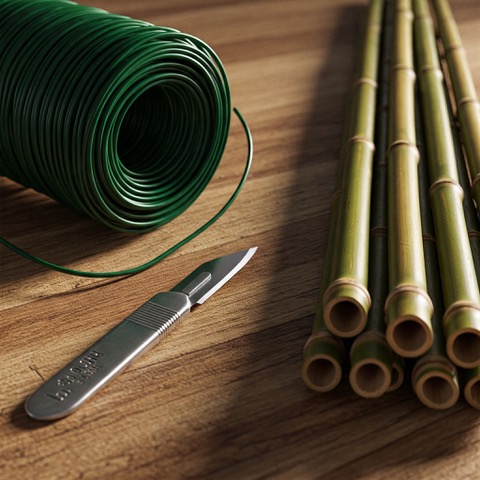
One of the best parts about cannabis plant training is the fact that you do not need to spend much money, and with your hands, some tools and equipment, you are ready to go! Below is a short list of the necessary tools and equipment.
THE KEY TO GROWING CANNABIS IS A HEALTHY CANNABIS PLANT
Training healthy cannabis plants is a key starting point when it comes to training cannabis plants. Cannabis plants will also need a chance to recover and heal, so starting with healthy plants is always best recommended.
WHAT IS THE BEST POT FOR GROWING CANNABIS?
The best pot for growing cannabis depends on your grow setup (indoor or outdoor), the medium (soil, coco, etc.), and your watering habits. Here are the most popular types of pots, along with their pros and cons:
GARDEN WIRE TO STABILIZE CANNABIS PLANTS
Gardening wire is best suited for training cannabis plants, especially when tying them down (L.S.T). You can cut string or elastic rubber bands in half and use them. Still, gardening wire—designed specifically for plants—is readily available at garden centres or online.
DO I NEED A PAIR OF SHARP SCISSORS FOR CANNABIS TRAINING
A pair of sharp scissors is another essential part of any plant training plan. A new pair of scissors will allow you to make the perfect cuts to foliage when required and reduce the stress that a blunt pair of scissors may cause.
SUPPORTING PLANTS WITH BAMBOO CANES
When training cannabis, I love to use bamboo canes to help support the side branches of plants. Inserting bamboo canes around the edge of your pots prevents the roots from becoming damaged. It maintains a firm support system as the plants grow bushy and pack on size and stature.
5 MISTAKES TO AVOID WHEN TRAINING CANNABIS PLANTS
Topping cannabis plants during flowering is not advised.
- Training plants too early
Training cannabis plants too early when they are weak and not well developed, can result in dead plants or stunted growth. Undeveloped and weak plants in a premature state can struggle and may not fully recover. Avoid applying training techniques too soon and wait until the plants are 21 to 28 days old.
- Not letting the plants recover
I always find that giving cannabis plants 6-7 days to recover after applying any training technique is best suited. You can inflict too much stress on the plants, especially when simultaneously using multiple plant training techniques. Cannabis plants need recovery time after each method, especially super cropping and topping, according to Skunk Magazine.
- Using weak and unhealthy plants
Working with strong and healthy plants is essential to success because weak and unhealthy plants often fail to recover and can become stunted or die. Techniques such as super cropping can be harmful, resulting in the snapped branch wilting and needing removal.
- Using blunt equipment
If you only have an old pair of scissors that have become blunt or a scalpel or razor that has lost its sharpness, attempting topping, pruning, or fimming will become difficult. As a result, the technique will likely not work as intended, stunt the plants, and set you back in time.
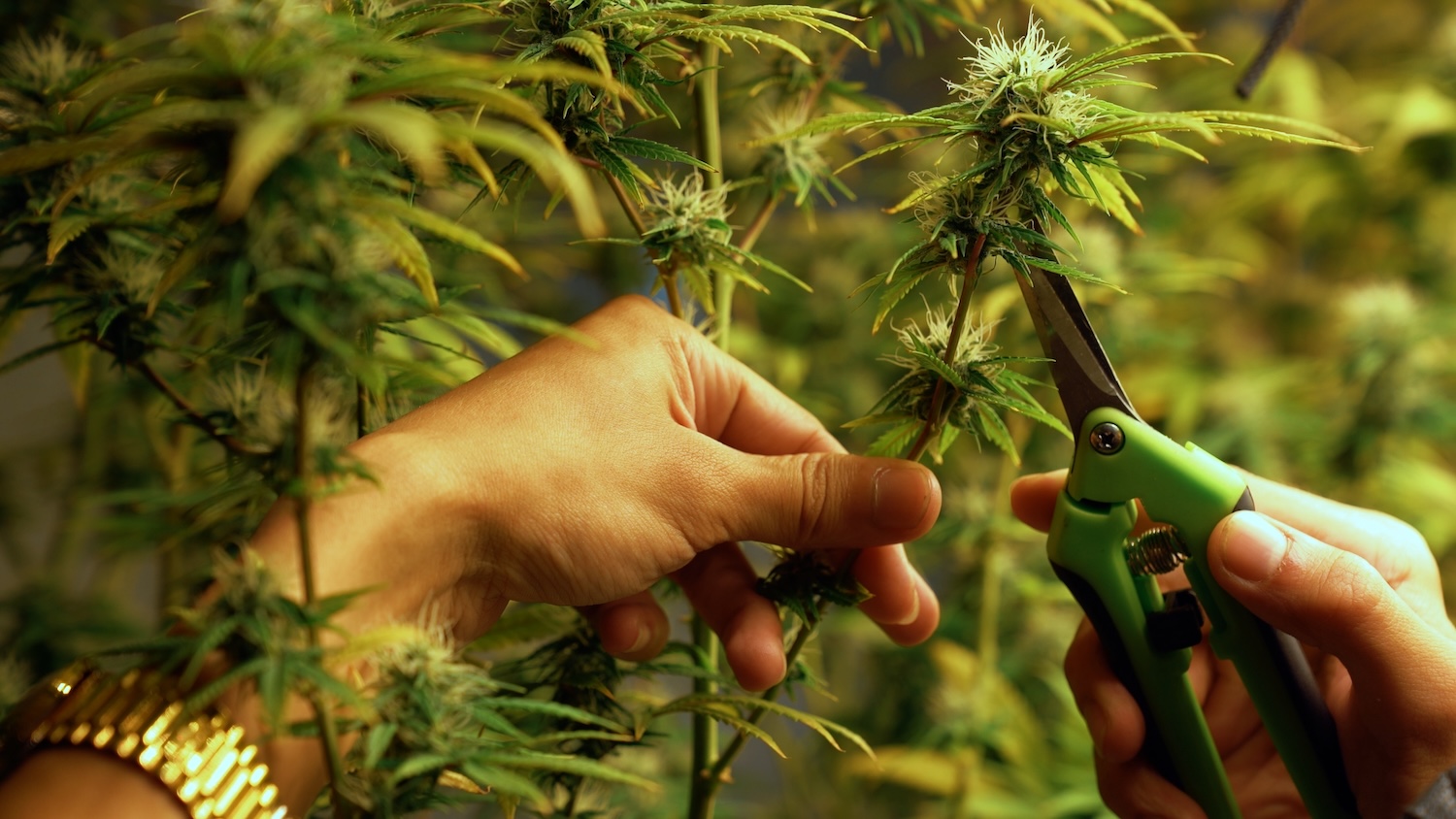
- Training flowering cannabis plants
Many growers prune away the lowest branches during the first two weeks of flowering. However, applying techniques such as topping, filming, and super cropping will only cause stress to your plants. Flowering cannabis plants slow down growth, resulting in stunted plants, and you will run the risk of producing a seeded crop due to hermaphroditism.
SUMMARY MARIJUANA PLANT TRAINING
Cannabis Plant training is far more than just a gardener’s trick — it’s a strategic method to optimize growth, increase yields, and sustainably support plant health. Whether it’s LST, HST, topping, or ScrOG, each technique offers unique benefits and should be chosen based on the plant type, environment, and desired outcome. With patience, knowledge, and a careful touch, these methods can lead to stronger, more productive, and better-managed plants.
